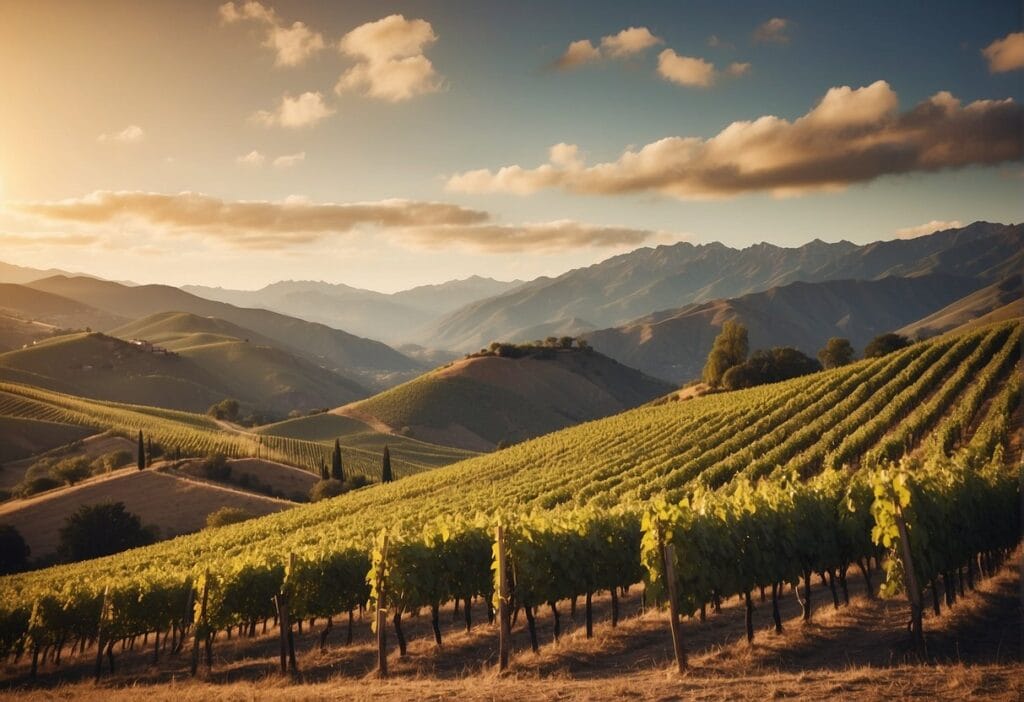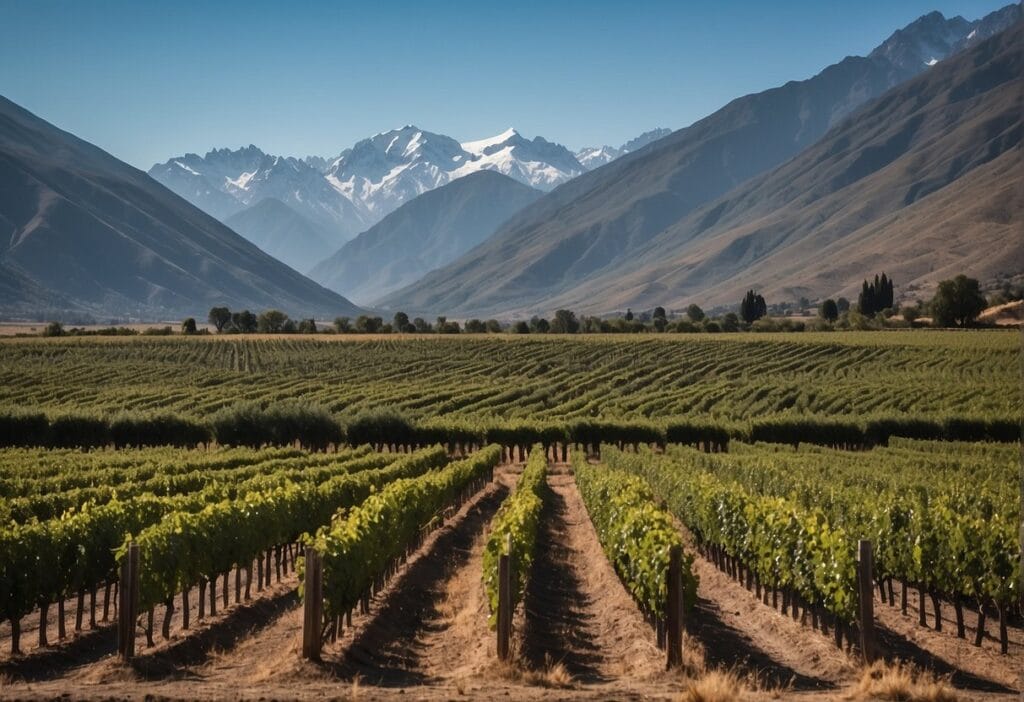Nestled in the shadow of the highest peak in the Americas, the Aconcagua Valley beckons as a premier location for wine enthusiasts seeking to sip and savor the unique offerings of Chile’s viticulture.
This valley, with its remarkable terroir, is renowned for producing wines with distinct character, forged by the interaction of the warm, dry climate and the meticulous care of local vintners. As your senses journey through this wine region, you’ll discover a diverse palette ranging from robust reds to crisp whites.
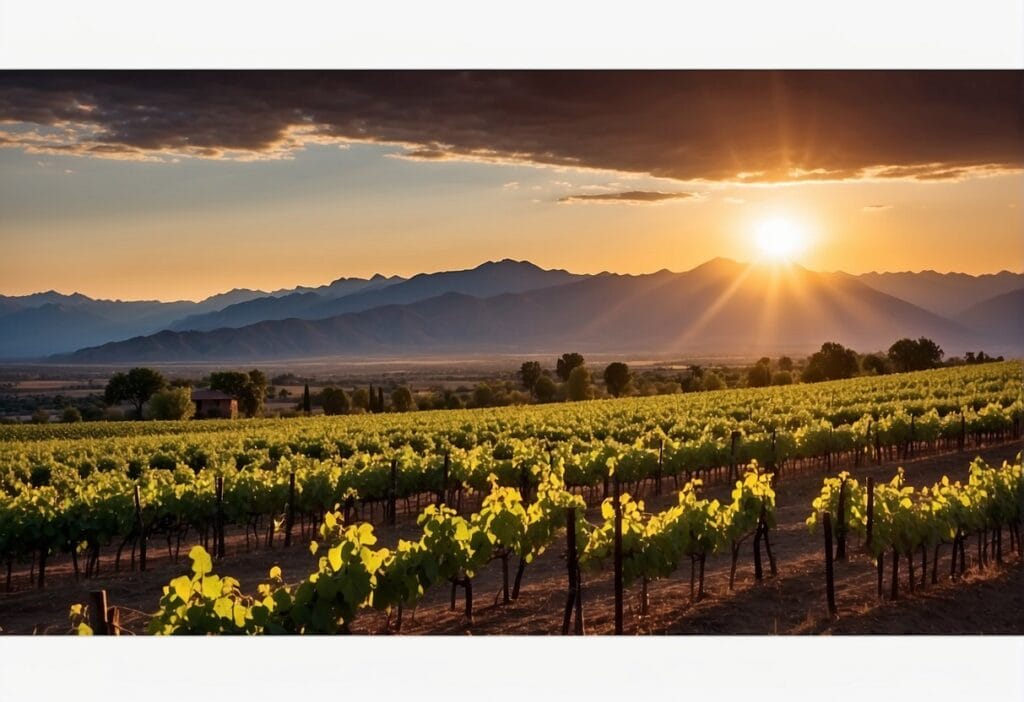
For those exploring the wines of Chile, the Aconcagua Valley presents an array of vineyards that highlight the region’s capacity for excellence in winemaking. The region profits from its geographical placement, where the cooling influence of the Pacific Ocean meets the Andean meltwater, creating an environment where grapes can thrive in sun-drenched valleys.
This juxtaposition of natural elements results in a perfect setting for cultivating classic grape varieties and gives the wines of the Aconcagua Valley a notable concentration of flavors.
Key Takeaways
- Aconcagua Valley is a key Chilean wine region with a distinctive terroir influenced by its proximity to the Andes and the Pacific.
- The region’s climate and geography foster the production of high-quality, flavorful wines.
- The valley offers diverse wine tourism experiences with a focus on environmental sustainability.
Geography and Climate
As you explore the Aconcagua Valley, you’ll discover a region dramatically shaped by its geography and climate. The Andes Mountains to the east and the Pacific Ocean to the west play crucial roles in creating the valley’s unique wine-growing conditions, with high daytime temperatures frequently moderated by oceanic influences.
Andean Influence
The formidable presence of the Andes Mountains greatly impacts the Aconcagua Valley, not just in topography but in climate too. These towering peaks provide a barrier that restricts humid air masses, leading to relatively low rainfall throughout the year. Moreover, the high altitudes result in significant diurnal temperature variations—very warm days followed by cool nights, a contrast that contributes to the slow and balanced ripening of grapes.
Proximity to the Pacific Ocean
Just about 60 miles north of Santiago, the Aconcagua Valley enjoys the cooling effects of the Pacific Ocean. This proximity results in cool breezes that sweep through the valley, effectively reducing the potentially extreme high daytime temperatures. This climatic condition lends a hand in preserving the acidity and aroma of the grapes, enhancing the overall quality of the wine produced in this region.
Historical Background
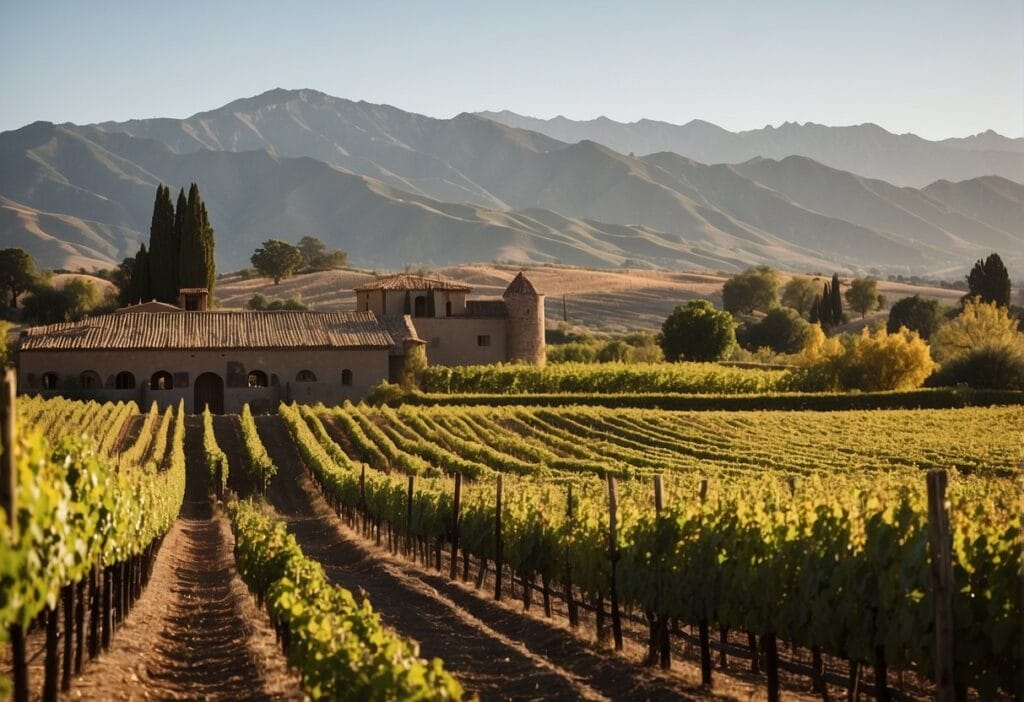
The Aconcagua Valley sits in Chile, a splendid strip of land that welcomes you with its sprawling vineyards and a rich tapestry of historical significance. Nestled just 65 kilometers north of Santiago, the valley lies comfortably in the eastern parts of the Valparaíso Region. Here, you’re exploring an area that buzzes with winemaking prowess, much of it steeped in traditions and methods that have evolved over time.
Initially, you might be surprised to know that the region wasn’t always considered prime for viticulture. Its transformation began with a bold vision—utilizing the diverse microclimates and terroirs of the valley, winemakers started crafting wines that have since placed the area on the global map.
The Aconcagua name not only reflects the surrounding landscape, dominated by the mesmerizing Andes mountain range but also symbolizes the lofty standards that Chilean wines have achieved.
Your journey through the valley’s historical context will reveal that it’s the home of some of the finest red wines, with grapes maturing under the watchful eye of Mt. Aconcagua—the highest peak in the Americas. Situated a short journey away from the Pacific Ocean, this region benefits from cooling breezes that temper the warm days—a perfect marriage of conditions to nurture grapes like Cabernet Sauvignon, Syrah, and Merlot to their fullest expression.
In this fertile cradle of winemaking, the Denomination of Origin (DO) system serves as a testament to the valley’s esteemed position in Chile’s wine narrative. It ensures that every bottle you taste carries the hallmark of quality and heritage unique to the Aconcagua Valley’s terroir. So while you’re sipping on a sumptuous glass from this region, remember you’re experiencing a piece of viniculture history that continues to thrive and fascinate.
Viticulture
Welcome to a closer look at the viticulture of the Aconcagua Valley wine region. You’re about to discover why this area’s wines have gained an esteemed reputation due to their distinct grape varieties, the unique terroir, and the innovative sustainable practices.
Grape Varieties and Wine Styles
In the Aconcagua Valley, you’ll find an impressive assortment of grape varieties, each contributing to the rich tapestry of wine styles that populate the region. Highlights include robust Cabernet Sauvignon, spicy Syrah, and velvety Merlot, creating some of the finest red wines in Chile.
But don’t overlook the whites! The valley also produces exquisite white wines, particularly from the cooler districts like Casablanca Valley and Aconcagua Costa, where the Chardonnay and Sauvignon Blanc grapes thrive, crafting vibrant and refreshing wines.
Terroir and Soils
The terroir of the Aconcagua Valley is a remarkable one, with diverse soils that play a crucial role in shaping the wines. Most notably, the region boasts sandy soil which proffers a natural defense against phylloxera, allowing the Aconcagua Valley to maintain a phylloxera-free environment. This sandy terroir contributes to the concentration and complexity of the wines produced here, endowing them with a pure fruit character and a striking minerality.
Sustainable Practices
As a wine lover, you’ll be pleased to learn about the sustainable practices implemented in the Aconcagua Valley. Vineyards are increasingly embracing organic and biodynamic methods, which not only respect the environment but also enhance the quality of the wines.
With a commitment to sustainable viticulture, the Aconcagua Valley is setting the standard for future winegrowing practices, ensuring that the traditions and natural beauty of Chilean winemaking are preserved for generations to come.
Winemaking Techniques
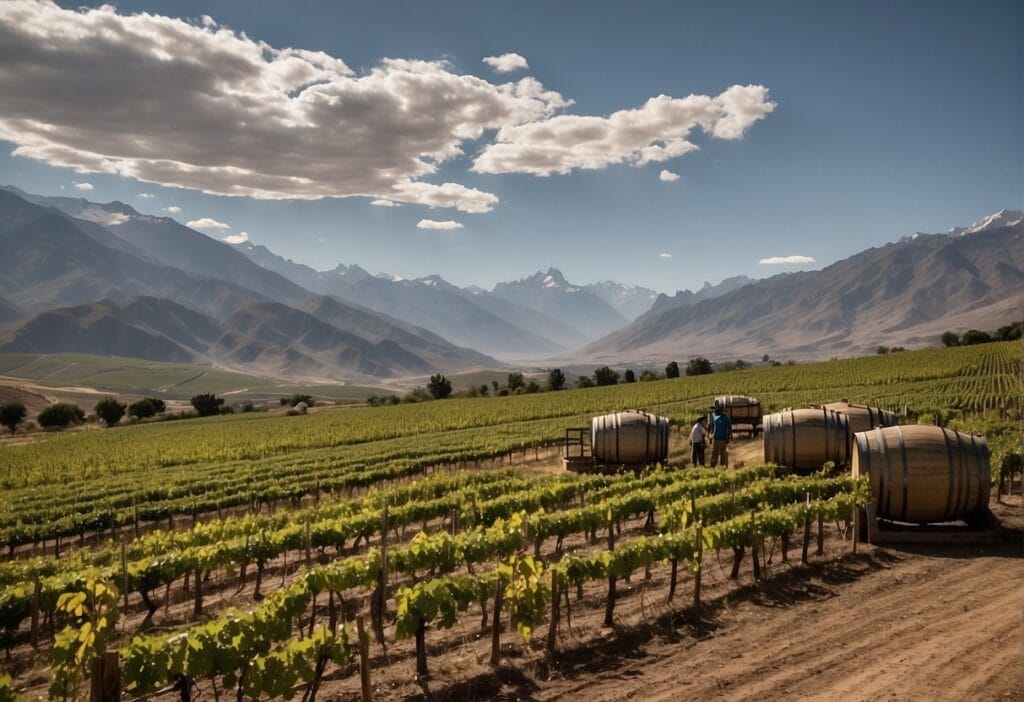
In the Aconcagua Valley, winemakers utilize a range of techniques to produce their renowned wines. You’ll find that the region’s Cabernet Sauvignon and Syrah are often robust, benefiting from the head training method where wine grapes grow closer to the ground, capturing the warmth of the soil.
The Sauvignon Blanc and Chardonnay from this region typically exhibit a delightful freshness, a result of the unique microclimates within Aconcagua. The vertical trellising technique for these grape types allows better sun exposure and air circulation, promoting healthy vine growth.
For those with a passion for reds, the artful creation of Bordeaux blends can be found here. Winemakers skillfully combine varieties like Carmenere — a grape almost lost to history but thriving in Chile — with others to create complex flavors.
Let’s look at the key techniques:
Vine Training
- Cabernet Sauvignon & Syrah: Head training
- Pinot Noir: Typically uses vertical shoot positioning to enhance sun exposure
Fermentation
- Controlled temperatures for preserving the distinct characteristics of each varietal
Aging
- Use of oak barrels to impart complexity, especially for reds like Carmenere and blends
Understanding the influence of climate and terroir, winemakers in Aconcagua Valley adapt their approach to suit each grape variety. A steadfast commitment to quality shines through in the care taken at each step of the winemaking process.
Wine Tours and Experiences
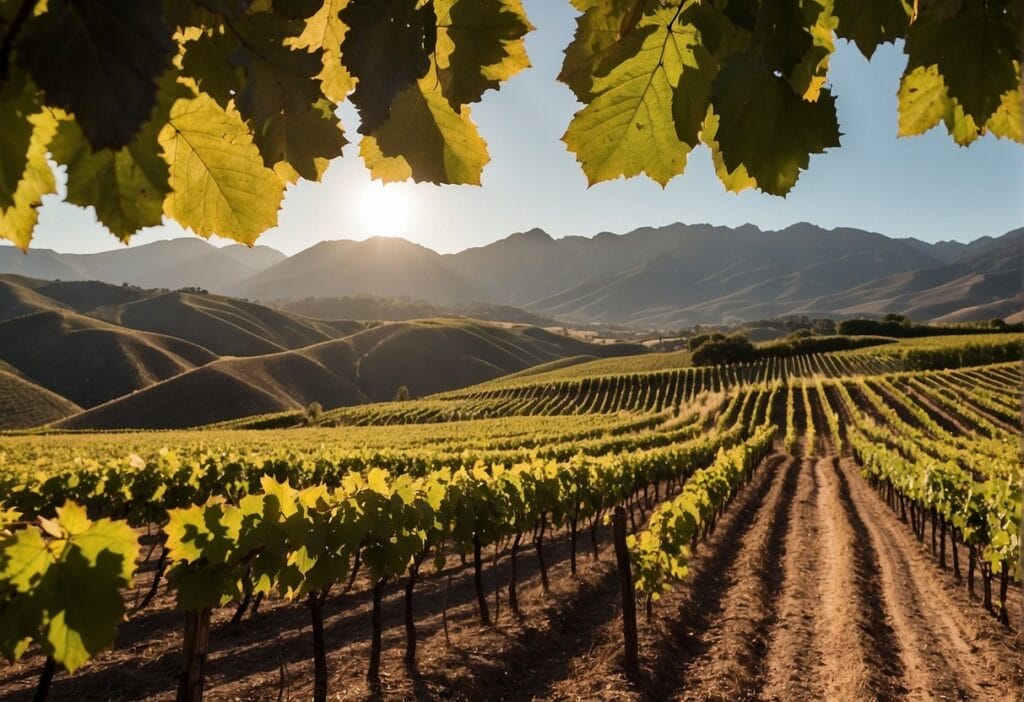
Embark on an immersive journey through the Aconcagua Valley, where your passion for wine can fully blossom. Here, you’ll be able to roam through vast vineyards and sample a selection of the finest wines Chile has to offer.
Guided Tastings
When you visit the Aconcagua Valley, joining a guided tasting is an absolute must. Under the guidance of knowledgeable sommeliers, you’ll have the opportunity to learn about the region’s distinct varietals and the winemaking process. At places like Narbona Wines, your palate is treated to a spectrum of flavors from their organic vineyard selections.
Winery Architecture
Beyond the sensory delight of wine tasting, the architecture of the wineries themselves is a sight to behold. The harmonious blend of traditional and contemporary designs not only complements the stunning landscape but enhances your overall experience. From the Mediterranean-inspired buildings to modern facilities, each winery presents a unique backdrop that is as memorable as the wines they produce.
Designations and Regulations
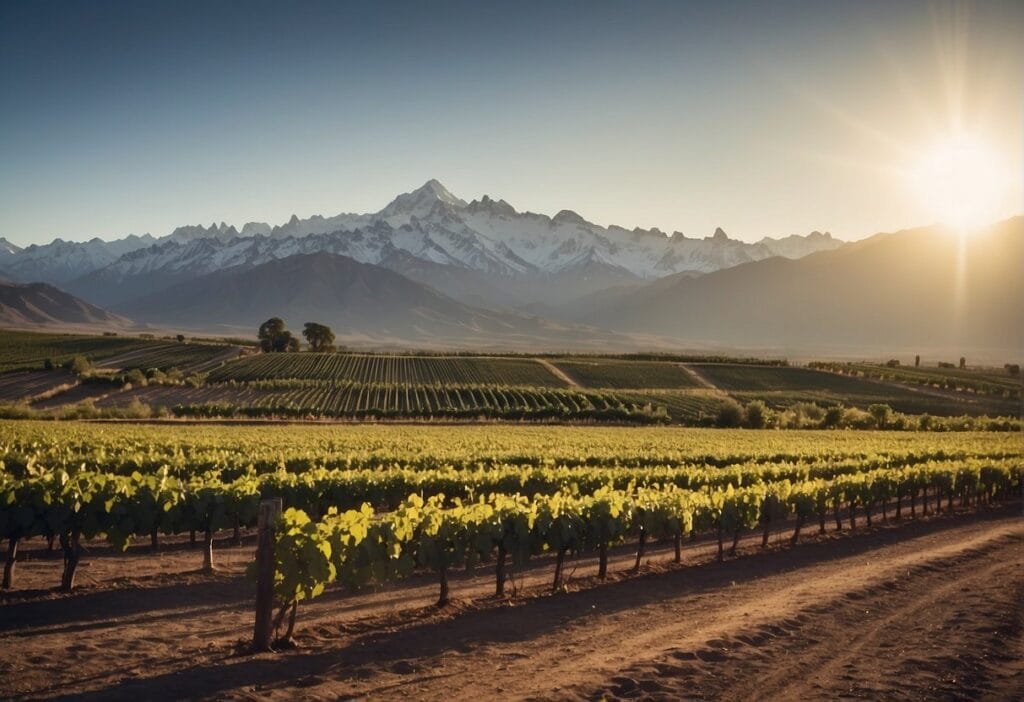
When exploring the acclaimed Aconcagua Valley wine region, you’ll encounter a structured system that guarantees the origin and quality of your favorite wines. Understanding these designations helps you appreciate the authenticity of the wines you enjoy.
Chilean Appellation System
The Chilean Appellation System is a critical component ensuring the integrity of Chilean wines. It’s built around the concept of Geographical Indication (GI) and Denomination of Origin (DO). This framework regulates the wine industry by defining specific regions where wines can be produced. To receive a DO recognition, wines must adhere strictly to the designated viticultural practices and the precise areas within the country where the grapes are grown.
Aconcagua Costa DO
Delving into the specifics, Aconcagua Costa DO is a sub-region within the Aconcagua Valley that has its own set of regulations mirroring its unique terroir. It’s influenced by both the coastal climate and the Chilean Appellation system, ensuring wines from this area maintain a high standard of quality.
This DO signifies wines originating closer to the coast, benefiting from the cooling effects of the ocean, which is particularly notable for creating expressive white wines and Pinot Noir with a distinct minerality.
By understanding these labels, you are better equipped to select wines that are a testament to the rich winemaking heritage and the distinct characteristics of the Aconcagua Valley.
Prominent Wineries
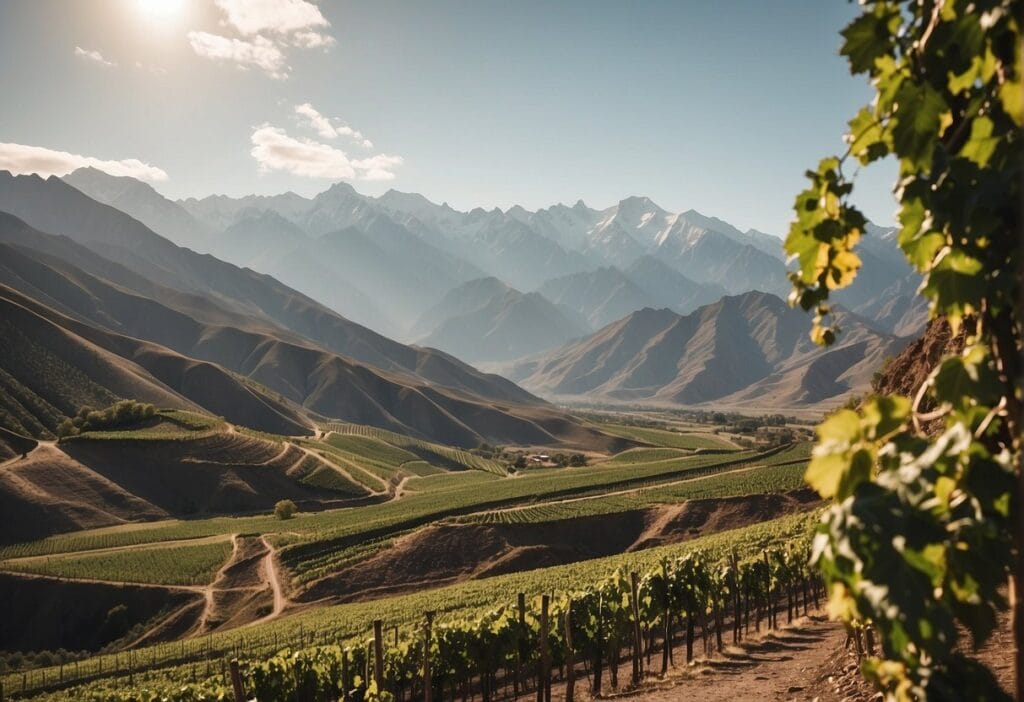
Explore the vibrant essence of the Aconcagua Valley through its renowned wineries where quality and tradition meet to serve your palate with exceptional wines. Each winery offers a unique story and an exquisite array of wines.
Viña San Esteban
In the heart of the Aconcagua Valley, Viña San Esteban has cultivated a reputation for innovation and excellence. This winery is not just known for its fine wines but also for its role in pioneering hillside vineyard planting in Chile. Here, you can immerse yourself in the taste of meticulously produced red and white varieties that reflect the distinct Terroir of the region.
Flaherty Wines
At Flaherty Wines, every glass exudes the passion and dedication with which the winery operates. Specializing in blends, this boutique winery takes pride in creating wines that are a true expression of the Aconcagua Valley’s unique climate and soil. As you sample their offerings, you’ll discover wines with both depth and complexity, crafted to perfection.
Discover more about these top wineries in Aconcagua Valley by booking a visit, where you can not only taste but also learn the heartfelt stories behind every bottle.
Local Gastronomy
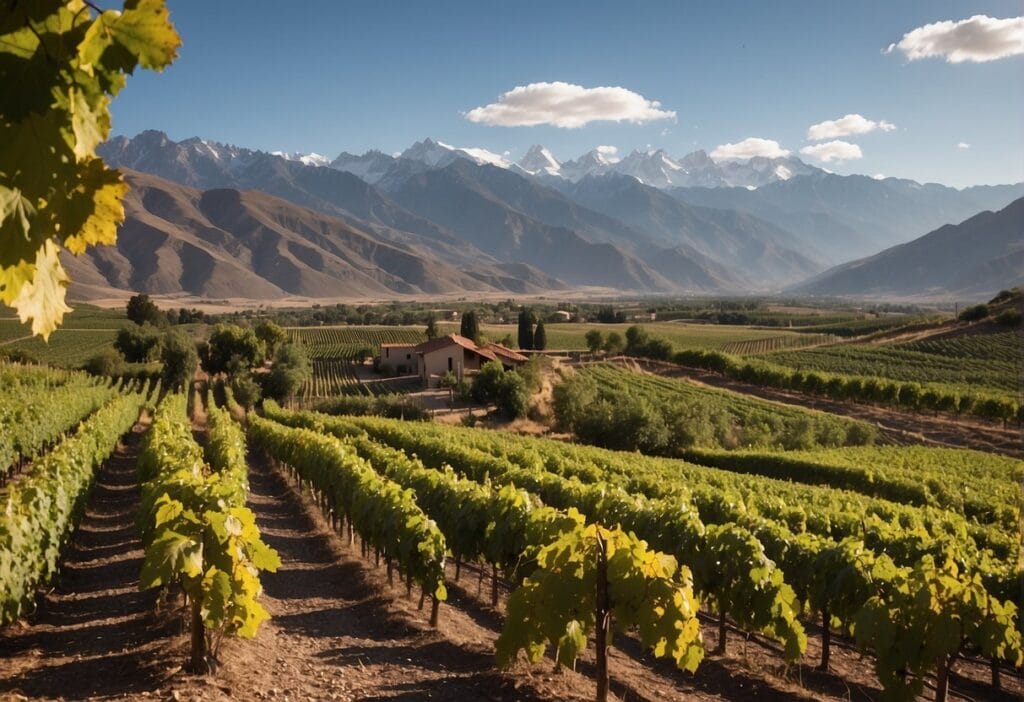
When you explore Aconcagua Valley, you’re not only met with spectacular views but also the delightful dance of flavors that make up the local gastronomy. Remarkably, the diverse range of red wines crafted in this region elevates your dining experience. Each sip promises to complement the area’s robust culinary offerings with their aromatic intensity.
Try a glass of wine inspired by the local varietals; the notes in the Syrah harmonize with grilled meats, accentuating the smoky taste. Local staples often involve the bold use of herbs and spices, which can transform a simple cut of beef into an exquisite culinary masterpiece.
Venture into seafood dishes that echo the freshness of the Pacific. Your palate will come alive with the zest of passion fruit sauces drizzled over delicate fish fillets. These sauces, often vibrant and tangy, stand up to the cleansed palate provided by a crisp Sauvignon Blanc.
Your culinary journey in Aconcagua Valley is influenced heavily by these elements:
- Bold red wines: enhancing rich, hearty flavors
- Aromatic herbs: lending depth to every dish
- Passion fruit: as a signature touch in sweet and savory delights
Remember, you’re in a region celebrated not just for its scenic vineyards, but for a food culture that’s just as nuanced and inviting. Take your time to savor the local dishes that are a testament to the region’s rich soil and the warmth of its people.
Conservation and Eco-Tourism
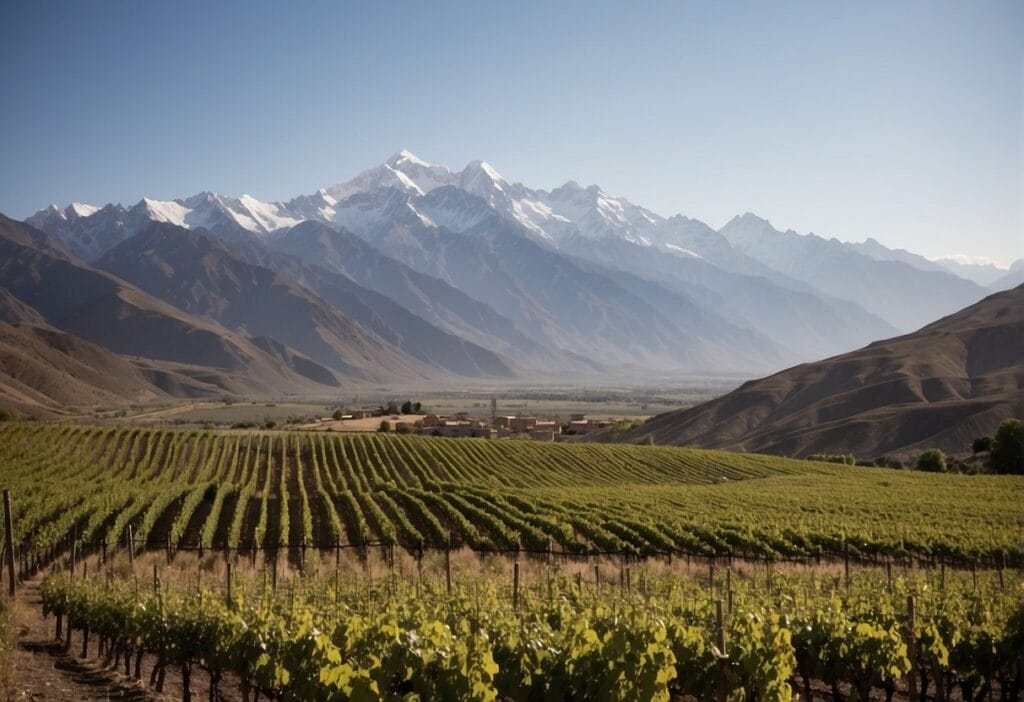
As you explore the Aconcagua Valley wine region, you’ll find that conservation and eco-tourism are integral to sustaining the area’s natural beauty and viticulture. Sustainable practices are not only encouraged but have become a way of life here.
Responsible Tourism
When you visit the wine estates in the Aconcagua Valley, you’re invited to embrace responsible tourism. This means being mindful of your environmental impact and supporting wineries that prioritize:
- Energy efficiency: Use of renewable energy sources and conservation measures to reduce carbon footprint.
- Water conservation: Implementation of irrigation techniques that maximize water use efficiency.
Protecting Biodiversity
Amidst the vines, there’s a concerted effort to protect biodiversity. This isn’t just about the grapes; it’s about every plant and animal that calls this valley home. Some actions include:
- Integrated pest management: Reducing chemical use by employing natural pest control methods.
- Habitat restoration: Planting native species and creating environments that support local wildlife.
By choosing to participate in eco-tourism and support these practices, you contribute to the preservation of Aconcagua’s unique terroir and biodiversity.
Frequently Asked Questions
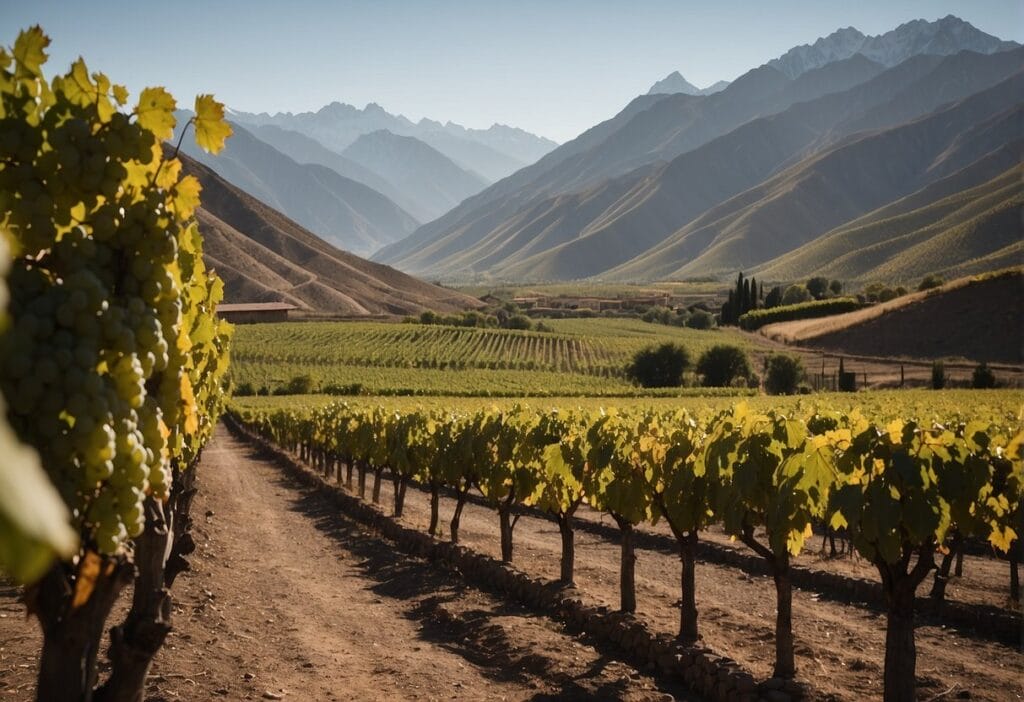
Embarking on a wine tour in the enchanting Aconcagua Valley, you’re bound to have questions. We’ve gathered some of the most common inquiries to enhance your visit to this prestigious wine-producing region.
What are some must-visit wineries in the Aconcagua Valley?
Quench your thirst for fine wines by visiting Viña San Esteban and Errázuriz, known for their exquisite selections. For an intimate experience, consider Viña von Siebenthal or explore the heritage at Viña Terramater, where traditional Chilean wines are revived by three pioneering sisters.
What activities can wine enthusiasts enjoy in the Aconcagua Valley wine region besides wine tasting?
Apart from savoring the local vinos, immerse yourself in cooking classes, or engage in outdoor adventures like hiking and horseback riding among the vineyards. The region’s natural beauty offers a perfect backdrop for photography—capture your wine journey as you explore.
Where can visitors find accommodation when touring the Aconcagua Valley wine region?
You’ll find accommodations ranging from cozy bed-and-breakfasts to luxurious resorts. Opt for places like the Hotel San Esteban or the boutique Inca Hoteles Los Andes, offering comfort close to the region’s wineries.
How does Aconcagua Valley’s climate contribute to its wine quality compared to other Chilean wine regions?
Aconcagua Valley’s unique climate, marked by hot temperatures and a long ripening season, creates an ideal environment for red grape varieties. The region’s Syrah is well-adapted to these conditions, resulting in wines of great intensity and quality.
What distinguishes Aconcagua Valley wines from those produced in the Casablanca Valley?
The Aconcagua Valley’s wines stand out due to the region’s hotter climate and drier conditions, which contribute to a more robust and concentrated flavor profile. In contrast, the Casablanca Valley, with its cooler and more maritime climate, tends to produce wines that are more aromatic and fresh.
What are some flagship wine varieties from the Aconcagua Valley that visitors should try?
Make sure to sample the bold Cabernet Sauvignon and elegant Syrah, which truly embody the essence of the Aconcagua Valley. For a taste of the valley’s innovation, seek out the increasingly popular Petit Verdot and Carménère varieties.
